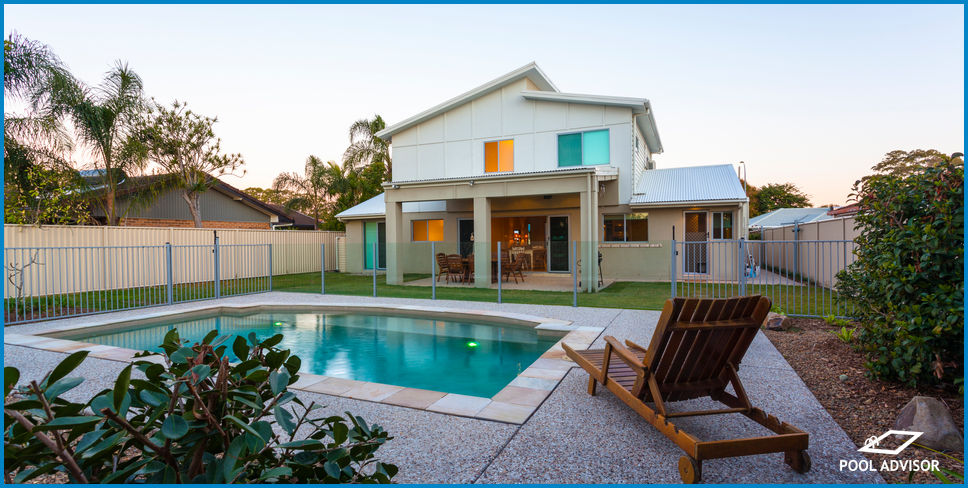
Black Spots in My Pebblecrete Swimming Pool - How To Remove Them?
Black spots appearing in your pebblecrete swimming pool is typically a sign of an ongoing black spot algae infestation. Black spot algae is composed of microscopic cells, can survive in pool water and clings well to surfaces, making it one of the hardest algae types to remove.
What Causes Black Spots in Pebblecrete Swimming Pools?
Black spot algae, which sometimes appears as a dark blue-green colour, is made up of microscopic single-celled organisms that feed on phosphates and other organic matter in your swimming pool.
Black spot algae can be present in the water of your swimming pool long before it attaches itself to surfaces, and once it is attached, it can be particularly hard to remove. This strain of algae is very resilient and requires consistent efforts to eradicate.
Algae infestations like black spot algae are typically caused by an imbalance in water chemistry, which may include consistently high pH or low chlorine levels. Dilapidated pool interiors or an accumulation of organic debris can also increase the likelihood of algae growth.
How to Remove Black Spots
Removing black spot algae is a time consuming process. All efforts should be made with the utmost diligence to reduce the chances of having to repeat algae treatment efforts. In a pebblecrete swimming pool especially, there are more grooves and edges for black spot algae to securely attach itself to, complicating the removal process.
Black algae can be harmful to humans if left to build up to high levels, so it's best to get on top of it as soon as possible!
To begin, thoroughly clean and remove all pool-related items or equipment that may be contaminated with algae. This should include your pool’s ladder, any pool toys you use, swimsuits, and removable skimmer baskets.
The next step is to scrub the black algae spots in your pool aggressively with a wire brush. It is important to remember that algae is microscopic, so even the smallest pieces left alive can produce more algae growth. Black spot algae is especially good at rooting itself down into crevices, making dedicated scrubbing a crucial step.
Next, clean your pool’s filter. Algae can accumulate in your filter and may re-enter the pool through your pump system. Use a stiff-bristled plastic brush to scrub your filter and the unit that houses it to remove as much algae as possible. Rinse the filter off with clean water.
After you have scrubbed at the spots and cleaned your pool’s filter, it is time to shock your pool. Always follow product-label instructions for maintaining proper alkalinity and pH before shocking your pool to get the best results.
Because black spot algae is very tough, it is recommended that you use three-times the normal dose of chlorine for your initial shock. This reduces the chance of any microscopic algae spores surviving and spreading, and can also help kill any algae remaining in your filter or pump system.
After the first shock, you will usually need to run your pump for at least 24hrs or as is indicated by your product’s specifications. This makes sure the shock chlorine is adequately circulated through all parts of your pool system.
For an especially prolific infestation of algae, it is recommended that you complete the scrubbing process again after the first shock is administered, and then shock the pool a second time using a normal dose.
After your chlorine levels return to normal, you may want to consider adding an algaecide to your pool. A black spot algae remover is what we normally use in pebblecrete pools. It makes a great option to follow-up your shock treatment because it does not require as low of a chlorine level as other products.
After allowing your algaecide to acclimate, it’s time to restore the chemistry of your pool to normal levels.
How to Prevent Black Spots From Occurring Again
Black spot algae requires a source of food in order to sustain itself, so the best way to prevent it from forming is through regular maintenance of your pool. This includes regularly removing any accumulated organic debris, running your pump for a minimum of 8 hours per day, and maintaining proper water chemistry.
Maintaining consistent alkalinity, chlorine levels, and a balanced pH is essential in preventing algae growth. You should be testing your pool water regularly and making adjustments to the chemistry as needed.
Old testing kits, especially those that have been improperly stored, can yield inaccurate results and may lead to unintended algae growth. If your testing kit is outdated or has been exposed to significant amounts of heat or sunlight, it may be time to purchase a new test kit.
Conclusion
While It’s always best to take preventative measures against algae before a problem develops, sometimes we fall behind on pool upkeep. The ease with which black spot can develop on pebblecrete makes it rather unforgiving.
Luckily, although black spot algae is one of the most difficult types of algae to remove, removal is not impossible. A well-implemented treatment regimen can rid your pebblecrete pool of black spot algae for years to come.
However, if worst does come to worst, you can always look resurfacing part or all of your pool to return it back to its original condition. If you are considering this, check out our list of pebblecrete resurfacing companies in Brisbane.
Do you have any questions about removing black spots from your pebblecrete pool? Have you had success or struggles with any of the steps we mentioned? We would love to hear from you in the comment section!

Louis
A chemical engineer by trade, Louis is committed to debunking myths in the pool industry by explaining the underlying chemistry and making it accessible to all.
